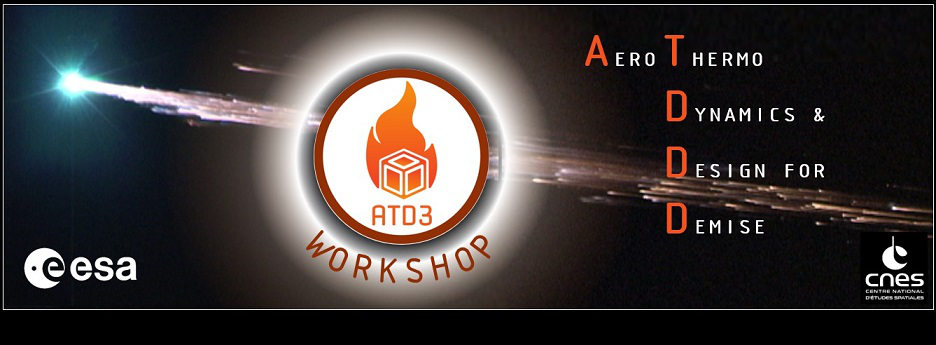Speaker
Description
The present work aims at improving the numerical prediction of graphite material degradation during an entire reentry phase. For this purpose, 2D axisymmetric simulations are carried out on the nosetip of the IRV-2 vehicle, which is a well-referred test case that employed a thermal protection system composed of non-charring carbon. The coupled fluid / thermal approach adopted for such aerothermodynamics computations is presented, as well as two different ablation models, which both rely on the heterogeneous reactions of oxidation and sublimation that occur on the heat shield of the vehicle. The first ablation paradigm is based on the B’ tabulation, which has been historically used to assess the blowing rate of the recessing wall in the framework of a single gas (air) at chemical equilibrium. If such strategy has proven its reliability and efficiency over the past few decades, it suffers from many assumptions that are prone to be broken when applied to realistic descent trajectories. Such hypotheses include the consideration of a chemical equilibrium at the wall, a supposedly weak blowing rate, no injection of the ablated carbonaceous species into the flow, and the use of convective coefficients that directly depend on the boundary layer location. To overcome these aforementioned limitations, a more relevant ablation model, which takes care of the intrinsic multi-species nature of the flow, is proposed and implemented. The ablating mass flux and the species mass fractions at the wall, which are the product of finite-rate surface chemistry mechanisms, are accurately performed and updated at each convergence step of the flow. A particular emphasis is made on the generalization to chemical nonequilibrium, which leads to reducing the ablated surface thickness during a complete trajectory. In this perspective, the influence of the injected species that react with the surrounding flow is also investigated. Finally, the effects of different surface reaction schemes on the ablated surface shape and temperature are discussed.

